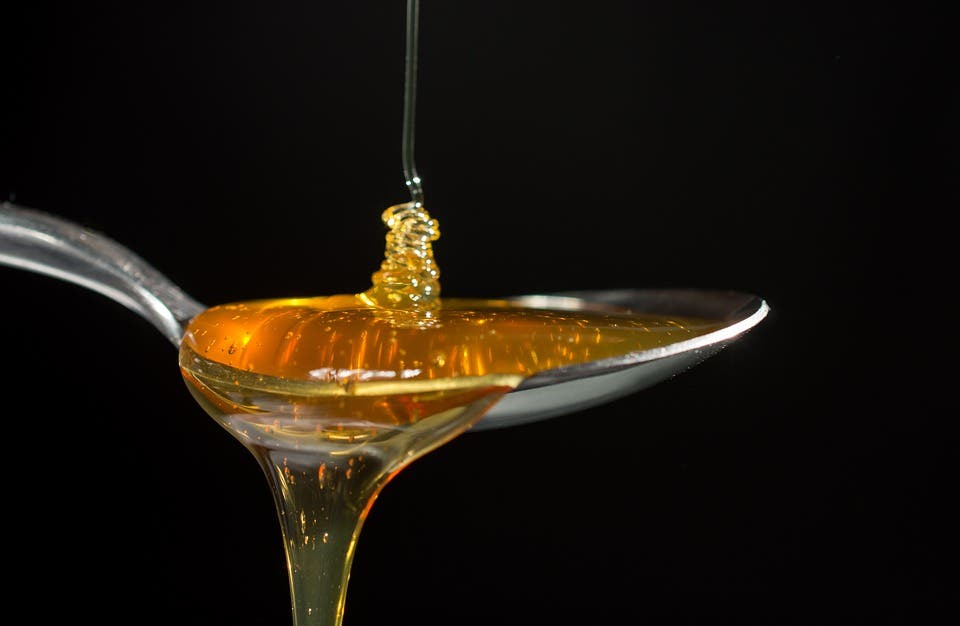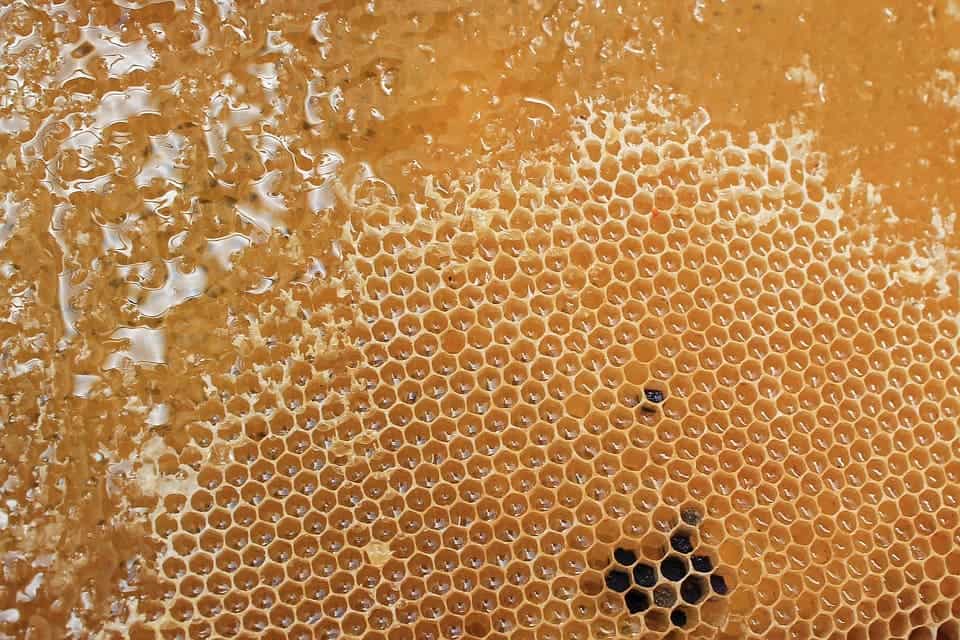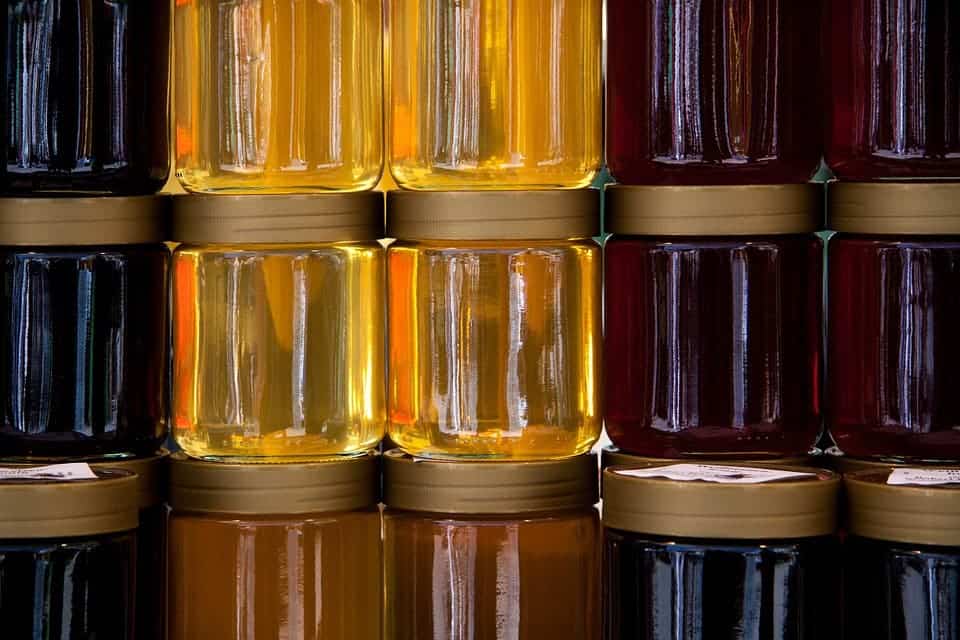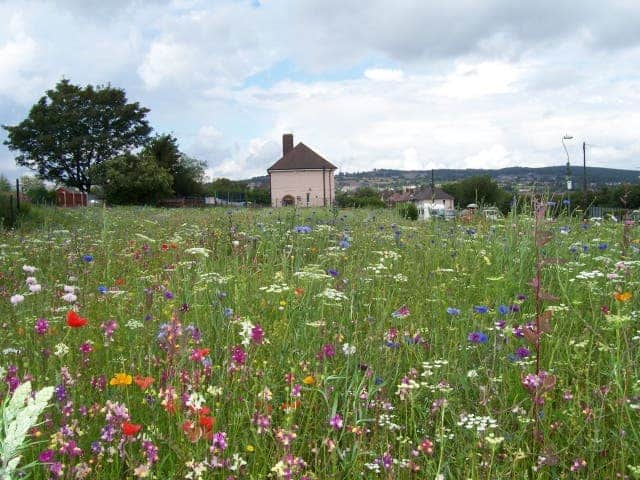How sweet is honey, drizzled into tea or on a piece of bread with butter in the morning. Honey is made, painstakingly, by industrious worker bees in an efficient factory-like hive. Incredibly, bees create this tasty treat as their winter food. Luckily for us, they produce more honey than they need and it can be harvested for us to enjoy.

How do bees make honey?
Bees buzz around nearby meadows looking for flowers with nectar inside. Bees can see ultraviolet wavelengths so some flowers have ultraviolet-reflective regions to guide bees to the nectar. Open or flat flowers with a lot of pollen and nectar attract bees. A nice smell or colour also helps.

Once it reaches a promising blossom, the bee uses its tube-like tongue (called a proboscis) to suck out the nectar. If there isn’t any nectar in that flower, the bee moves along quickly. Time is honey! Bees have an extra stomach just for storing nectar called the crop. They can carry up to 85% of their body weight in nectar or pollen. While they collect nectar, bees pollinate flowers by transferring pollen, which contains male gametes, to the flowers’ female organs, making it possible for many fruits to grow (such as almonds, apples, avocado, berries, cabbage, cherries, chestnuts, citrus, cucumbers, garlic, pumpkins, sunflowers, and watermelons, to name just a few).

Nectar is quite watery, and as you know honey is thick and not very runny. Back at the hive, the bees pass the nectar around to other bees mouth-to-mouth until the nectar is thicker. They mix the nectar with enzymes necessary to mature the honey, and then regurgitate it into a honeycomb cell.
The water is further evaporated by the warm temperature of the hive, which is 32-35 °C. Bees fan the nectar with their wings to help make it thicker. When the honey is thick enough, they seal the cells with beeswax.
Why do bees make honey?
Bees make honey so that they have food for the winter when there aren’t any flowers to harvest food from. Bees do not hibernate but stay active and huddle together for warmth. Honey is the ideal food because it provides a lot of energy to the bees; it’s a rich source of carbohydrates. It also stays good for a really long time; as the high percentage of sugar inhibits bacterial and fungal growth. That’s why you can keep honey on the shelf and not in the refrigerator and also why dried fruit and jam stay good for a long time.

The honey in your cupboard
Bees make more honey than they need for the winter so beekeepers harvest the extra honey. Bees produce an average of 30 pounds extra per year (that number depends on a lot on weather and pests). The honey can be harvested multiple times per year.
First, the hive is smoked so that the bees are sedated. Then the wax seals are scraped off and the honeycombs are placed in a centrifuge that spins the frames, extracting the honey. The resulting honey is strained to remove any particles. Even after this whole process, the honeycomb remains intact and is put back into the hive. The bees immediately remove the remaining bits of honey and repair any damaged cells.

Depending on the time of the year and which flowers are available, the colour and taste of honey will be different. Honey can range from white to a dark amber or brown. Darker honey usually has a stronger taste, such as forest or buckwheat honey. The “typical” light golden colour is from clover patches.

Not so sweet
Unfortunately, bees have been struggling recently. One big problem is the loss of meadows full of flowers to make way for intensive agriculture. In the UK alone, 98% of meadows have been lost.
Pesticides also have a huge impact on bees. They can directly kill bees, affect their functioning, and reduce the number of flowing plants. Pesticides are bad for all pollinators, including butterflies, moths, birds, bats, and wasps. Human activity has been responsible for an increase in the prevalence of colony collapse disorder — that is when most of the worker bees desert the hive and leave only the queen and the immature bees.
A few ways to help are to have a lawn with flowers for pollinators instead of a manicured grass lawn. Other ways are to limit pesticide use, buy produce that is pesticide-free, and to buy local honey.

Enjoy the honey— and think of the bees!






